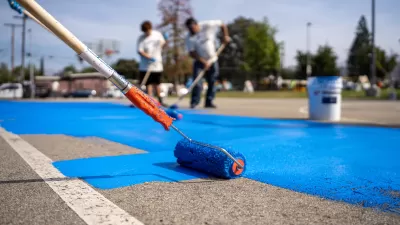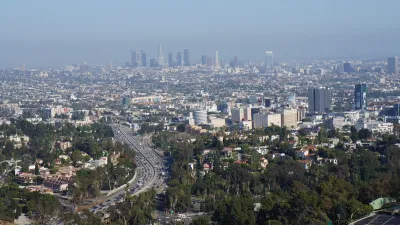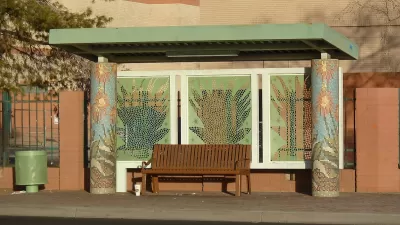With asphalt temperatures reaching as much as 150 degrees, parents and advocates are asking the city’s school district to provide more shade, trees, and other heat mitigation features on its schoolyards and playgrounds.

Parents and advocates are calling on the Los Angeles Unified School District to implement more heat mitigation measures on its school playgrounds, where asphalt can reach temperatures of 150 degrees Fahrenheit, reports Jasmine Viel for CBS Los Angeles.
“LAUSD is one of the largest landowners in the city, owning 6,400 acres of schoolyards. These schoolyards that are covered in asphalt are some of the hottest places in every single neighborhood,” says Aleigh Lewis of Angelenos for Green Schools. While the district has announced plans to add more trees and greenery to its schoolyards, some parents are calling for more immediate action. “The quickest option, if you can't wait for trees to grow, is to just put shade structures,” said LAUSD parent Connor Clayton.
The Los Angeles Times brought attention to the issue in March, when Tony Barboza detailed the negative impacts of overheated asphalt schoolyards. Barboza noted that LAUSD’s superintendent, Alberto Carvalho, “promised to release a plan within his first 100 days to green schoolyards, starting with asphalt-dominated campuses in neighborhoods with the greatest need for open space.”
In June, the district announced a new budget that includes funding for ‘greening schoolyards’ as well as a pilot program at Castellanos Elementary, reported Erin Stone in LAist. According to Stone’s article, “A recent study by the Trust for Public Land found that when factoring in benefits gained by greening schools, such as increased student attendance, better test scores, higher teacher retention and lower utility costs as a result of a cooler campus, California schools could save $600,000 over 20 years per campus.”
FULL STORY: LAUSD parents call for changes to school playgrounds amid scorching temperatures

Maui's Vacation Rental Debate Turns Ugly
Verbal attacks, misinformation campaigns and fistfights plague a high-stakes debate to convert thousands of vacation rentals into long-term housing.

Planetizen Federal Action Tracker
A weekly monitor of how Trump’s orders and actions are impacting planners and planning in America.

In Urban Planning, AI Prompting Could be the New Design Thinking
Creativity has long been key to great urban design. What if we see AI as our new creative partner?

How Trump's HUD Budget Proposal Would Harm Homelessness Response
Experts say the change to the HUD budget would make it more difficult to identify people who are homeless and connect them with services, and to prevent homelessness.

The Vast Potential of the Right-of-Way
One writer argues that the space between two building faces is the most important element of the built environment.

Florida Seniors Face Rising Homelessness Risk
High housing costs are pushing more seniors, many of them on a fixed income, into homelessness.
Urban Design for Planners 1: Software Tools
This six-course series explores essential urban design concepts using open source software and equips planners with the tools they need to participate fully in the urban design process.
Planning for Universal Design
Learn the tools for implementing Universal Design in planning regulations.
Gallatin County Department of Planning & Community Development
Heyer Gruel & Associates PA
JM Goldson LLC
Mpact (founded as Rail~Volution)
City of Camden Redevelopment Agency
City of Astoria
Jefferson Parish Government
Camden Redevelopment Agency
City of Claremont





























